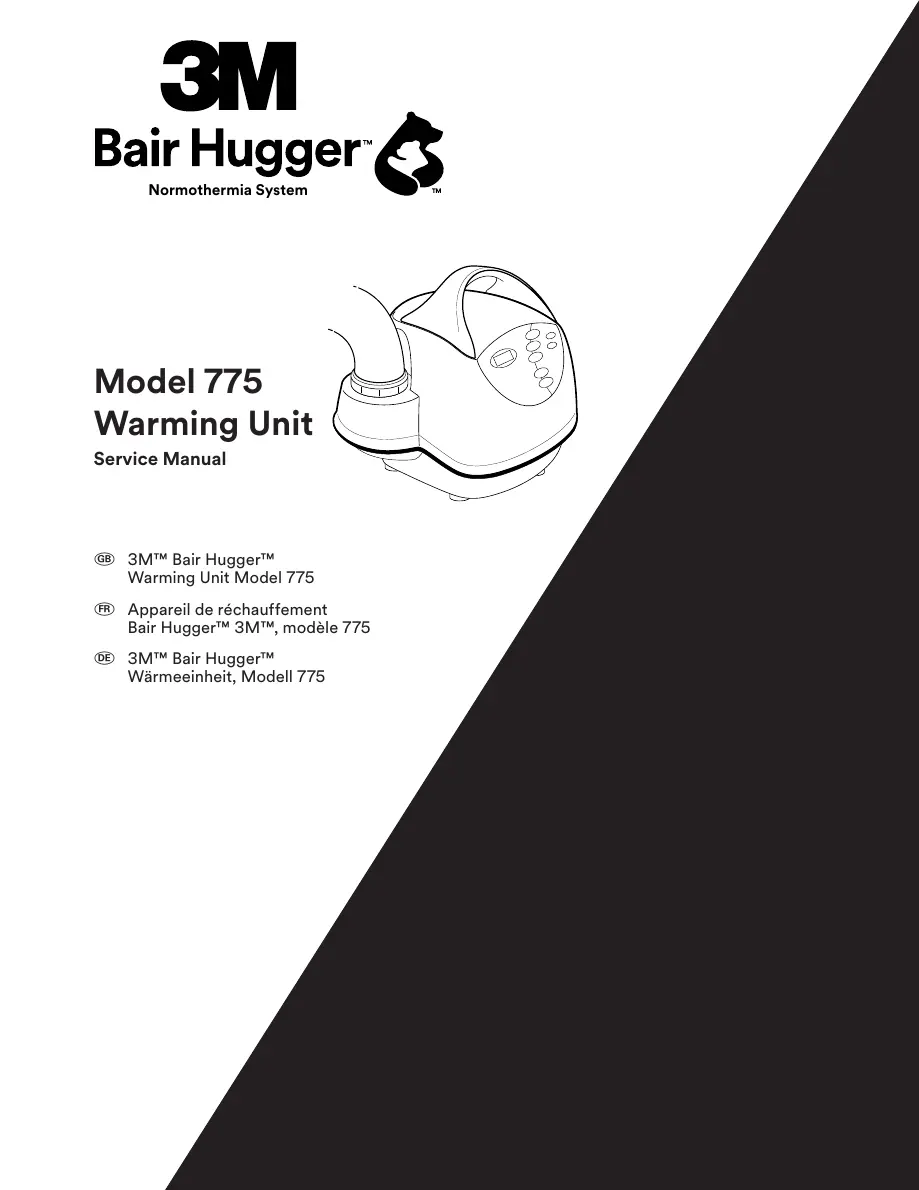What to do if 3M Bair Hugger 775 user interface is defective?
- SScott GardnerSep 13, 2025
If the 3M Food Warmer has a defective user interface, replace the user interface, then calibrate and return to service.

What to do if 3M Bair Hugger 775 user interface is defective?
If the 3M Food Warmer has a defective user interface, replace the user interface, then calibrate and return to service.
| Over-temperature Protection | Yes |
|---|---|
| Audible Alarm | Yes |
| Visual Alarm | Yes |
| Model Number | 775 |
| Product Type | Patient warming system |
| Brand | 3M |
| Intended Use | To prevent and treat hypothermia in patients |
| Size | Varies by model |
| Compatibility | Compatible with various 3M Bair Hugger blankets |
| Sterility | Non-sterile |
| Type | Forced Air Warmer |
| Temperature Range | Ambient to 43°C (109.4°F) |
Describes the components and function of the system.
Outlines the intended uses and patient populations for the system.
Explains the meaning of various symbols found on product labeling.
Details warning levels and conditions to avoid for safe operation.
Highlights hazardous situations and minor injury risks.
Covers correct usage, maintenance, and essential post-repair safety checks.
Describes the automatic self-test and initialization sequence upon power-up.
Explains available temperature settings, delivery ranges, and fan speed.
Covers the unit's state when idle, with blower and heater off.
Lists common fault conditions and the response to over-temperature events.
Introduces special modes for service, calibration, and accessing system info.
Provides instructions on how to enter and leave the various alternative modes.
Details the procedure to verify the over-temperature shutdown functionality.
Explains how to view, clear, and interpret recorded fault codes.
Lists fault codes, their possible causes, and solutions.
Covers viewing hour meters, operating timers, and replacing the air filter.
Instructions for detaching, reattaching hoses, and replacing fuses.
Steps for taking the warming unit apart and putting it back together.
Guidelines for cleaning, routine maintenance, and storage.
Guidance for resolving persistent fault conditions.
Contact information and procedures for ordering parts or service.
Instructions for packaging and shipping a unit for repair.
Details electromagnetic emission and immunity compliance and guidance.
Lists regulatory approvals, device classifications, and technician diagnostic capabilities.
Provides a schedule for filter inspection and temperature calibration.
Details dimensions, weight, noise level, hose length, and filter type.
Describes the thermostat, alarm system, overcurrent protection, and electrical components.
A section for recording maintenance actions performed on the unit.
